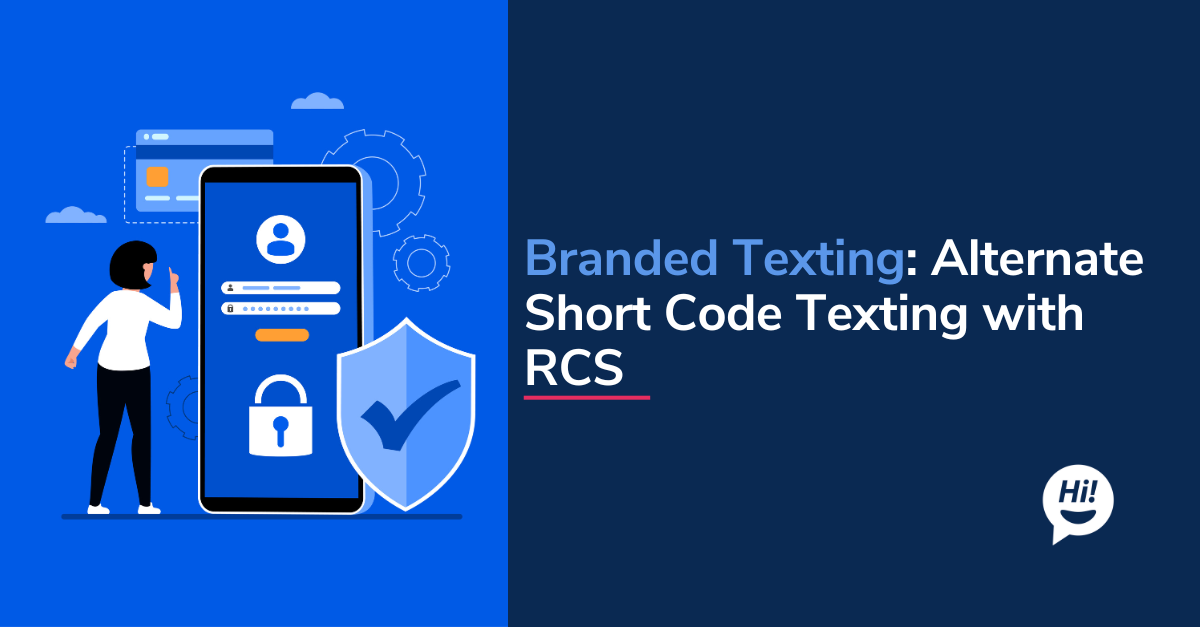Imagine a world where your AI systems operate flawlessly, delivering accurate predictions and driving optimal outcomes. However, as AI models become increasingly complex, understanding their inner workings and ensuring their reliability can feel like navigating a labyrinth blindfolded. How can we gain visibility into AI's "black box" and ensure that our AI systems are performing as expected?
This is where AI Observability comes in.
In this blog post, we'll delve into the core components of AI Observability, explore its benefits, and provide practical guidance on implementing it effectively.
What is AI Observability?
AI Observability is like having an X-ray vision of your AI systems. It allows you to understand how your AI models behave, why they make certain decisions, and how they're performing over time. This is crucial because AI systems can be complex and operate in dynamic environments, making it difficult to understand their inner workings.
By implementing AI Observability, you can:
- Improve Performance: Optimize model accuracy, efficiency, and resource utilization.
- Increase Trust: Build confidence in your AI systems by understanding their decision-making processes.
- Reduce Risk: Mitigate potential issues like bias, errors, and unexpected behavior.
- Enhance Compliance: Ensure adherence to ethical guidelines and regulations.
The Core Components of AI Observability
AI Observability is built upon four key components that work together to provide a comprehensive understanding of your AI systems:
Monitoring
Continuous monitoring is the foundation of AI Observability. It involves tracking key metrics and performance indicators to gain insights into the health and behavior of your AI models.
Importance of Continuous Monitoring:
- Early Issue Detection: Continuous monitoring allows you to detect potential issues early on before they escalate and impact users or business outcomes.
- Performance Optimization: By tracking key metrics, you can identify areas for improvement and optimize your models for better accuracy, efficiency, and resource utilization.
- Data Drift Detection: Monitoring helps detect data drift, which occurs when the input data distribution changes over time, potentially leading to decreased model accuracy.
Key Metrics to Track:
- Model Accuracy: Measure how accurately your model is making predictions.
- Prediction Speed: Track the time it takes for your model to generate predictions.
- Data Drift: Monitor changes in the input data distribution.
- Resource Consumption: Track the computational resources (e.g., CPU, memory, storage) used by your AI models.
Tools and Techniques for Effective Monitoring:
- Dashboards: Use dashboards to visualize key metrics and trends over time.
- Alerts: Set up alerts when specific metrics deviate from expected values.
- Logging: Collect detailed logs of AI system events and activities for analysis and troubleshooting.
Explainability
Explainable AI (XAI) focuses on making AI models more transparent and understandable. It provides insights into why an AI model made a specific prediction, helping to build trust and identify potential biases or errors.Defining XAI:
- Transparency and Interpretability: XAI aims to make AI decision-making more transparent and interpretable, allowing humans to understand the reasoning behind predictions.
XAI Techniques:
- LIME (Local Interpretable Model-agnostic Explanations): LIME explains individual predictions by approximating the model locally with a simpler, interpretable model.
- SHAP (SHapley Additive exPlanations): SHAP assigns importance values to features, explaining how each feature contributes to a prediction.
- Counterfactual Explanations: Counterfactual explanations show how changing input features would alter the prediction, providing insights into the model's decision boundaries.
Benefits of Explainability:
- Bias Detection: Identify potential biases in the model or data that may lead to unfair or discriminatory outcomes.
- Error Analysis: Understand why a model made an incorrect prediction and identify areas for improvement.
- Trust Building: Increase trust in AI systems by providing transparency in decision-making processes.
Debugging
Debugging AI systems can be challenging due to their complexity and the involvement of various components. Effective debugging requires identifying and resolving issues affecting model performance and reliability.
Challenges of Debugging AI Systems:
- Complex Interactions: AI systems often involve complex interactions between different components, making it difficult to pinpoint the root cause of an issue.
- Data Dependencies: AI models rely heavily on data, and data quality or pipeline issues can significantly impact performance.
- Reproducibility: Reproducing issues in AI systems can be challenging due to the stochastic nature of some AI algorithms and the dynamic nature of data.
Common Issues:
- Data Drift: Changes in the input data distribution over time can lead to decreased model accuracy.
- Model Degradation: Model performance can degrade over time due to factors like concept drift or environmental changes.
- Performance Bottlenecks: Inefficient code, inadequate resources, or suboptimal data processing can create performance bottlenecks.
Strategies and Tools for Effective Debugging:
- Version Control: Track changes to models, data, and code to facilitate debugging and rollback to previous versions if necessary.
- Profiling: Analyze code performance to identify bottlenecks and optimize resource utilization.
- Unit Testing: Test individual components of the AI system to ensure they function correctly.
- Debugging Tools: Utilize specialized debugging tools for AI systems that provide features like step-through execution, variable inspection, and breakpoints.
Visualization
Visualizing complex AI data is crucial for gaining insights, identifying patterns, and communicating findings effectively.
Importance of Visualization:
- Pattern Recognition: Visualization helps identify patterns and trends in data that may not be apparent from raw numbers or tables.
- Communication: Visualizations can effectively communicate complex information to technical and non-technical audiences.
- Insight Generation: Visualizing data can spark new insights and understanding of AI system behavior.
Visualization Techniques:
- Heatmaps: Visualize correlations between features or the distribution of data points.
- Graphs: Display relationships between variables or track changes over time.
- Dimensionality Reduction: Reduce the complexity of high-dimensional data for easier visualization and analysis.
Benefits of Visualization:
- Improved Understanding: Gain a deeper understanding of AI system behavior and performance.
- Faster Issue Identification: Quickly identify anomalies or outliers in data.
- Effective Communication: Communicate findings clearly and concisely to stakeholders.
By effectively utilizing these four components, you can comprehensively understand your AI systems and ensure their reliability, performance, and ethical operation.
Why is AI Observability Important?
AI Observability is not merely a technical advantage; it's a critical necessity for organizations developing and deploying AI systems. Here's why:
Improved Performance
Identifying Areas for Optimization:
- Bottleneck Analysis: Observability helps pinpoint performance bottlenecks in your AI pipeline, whether they stem from data preprocessing, model training, or inference.
- Resource Optimization: By monitoring resource consumption, you can identify opportunities to optimize resource allocation and reduce costs.
- Accuracy Enhancement: Observability helps identify areas where model accuracy can be improved, such as by addressing data drift or refining model architecture.
Techniques for Improvement:
- Hyperparameter Tuning: Observability tools can help you systematically explore different hyperparameter settings to find the optimal configuration for your model.
- Feature Engineering: By analyzing feature importance and relationships, you can identify opportunities for feature engineering to improve model accuracy.
- Model Selection: Observability can help you compare the performance of different models and select the best one for your specific task.
Increased Trust and Transparency
Building Trust:
- Explainable Predictions: Observability, mainly through explainability techniques, helps build trust in AI systems by providing insights into why a model made a specific prediction. This transparency fosters confidence in the system's reliability and fairness.
- Bias Detection: Observability helps identify and mitigate biases in AI models, ensuring that decisions are made fairly and without discrimination.
Transparency for Ethical AI:
- Accountability: Transparency enables accountability by clearly understanding how AI systems operate and make decisions.
- Ethical Considerations: Observability supports the development and deployment of ethical AI agents by promoting fairness, accountability, and responsible use of AI.
Reduced Risk and Enhanced Reliability
Mitigating Risks:
- Proactive Issue Detection: Observability lets you proactively detect and address potential issues before they impact users or business operations.
- Root Cause Analysis: Observability helps identify the root cause when issues occur, enabling faster resolution and preventing recurrence.
- Performance Monitoring: Continuous performance monitoring helps ensure that AI systems operate reliably and meet service level agreements (SLAs).
Enhancing Reliability:
- Robustness and Resilience: Observability helps build more robust and resilient AI systems by providing insights into potential vulnerabilities and enabling proactive mitigation strategies.
- Continuous Improvement: By continuously monitoring and analyzing AI system behavior, you can identify areas for improvement and enhance overall reliability.
Enhanced Compliance and Governance
Ensuring Compliance:
- Regulatory Requirements: Observability helps organizations comply with relevant regulations and guidelines, such as GDPR, CCPA, and industry-specific regulations for AI.
- Auditing and Reporting: Observability tools provide audit trails and reporting capabilities to demonstrate compliance with regulatory requirements.
Responsible AI Development:
- Ethical Frameworks: Observability supports the implementation of ethical frameworks for AI development and deployment, ensuring that AI systems are used responsibly and for society's benefit.
- Fairness and Accountability: Observability promotes fairness and accountability in AI systems by providing transparency into their decision-making processes and enabling the detection and mitigation of bias.
By embracing AI Observability, organizations can unlock the full potential of AI while mitigating risks, building trust, and ensuring responsible and ethical AI development and deployment.
Implementing AI Observability: Best Practices
Implementing AI Observability effectively requires a thoughtful approach and a commitment to best practices. Here's a guide to help you get started:
Choose the Right Tools
The market offers a variety of AI observability platforms and tools, each with its strengths and weaknesses. When selecting tools, consider factors like the specific needs of your AI systems, the complexity of your models, and your existing infrastructure. Look for platforms that provide comprehensive monitoring capabilities, explainability features, debugging tools, and visualization options.
Establish Clear Objectives
Before implementing AI Observability, define clear objectives and goals. What do you hope to achieve with observability? Are you primarily focused on improving model performance, mitigating risks, or ensuring compliance? Establishing specific goals will help you choose the right tools and metrics and measure the success of your observability efforts.
Integrate with Existing Systems
Integrate your chosen tools with your existing AI development and deployment pipeline for seamless observability. This ensures data is collected and analyzed throughout the entire AI lifecycle, from model training to production deployment. Integration with your CI/CD pipeline can also automate observability tasks and ensure that models are continuously monitored for performance and reliability.
Foster Collaboration
AI Observability is not a solo endeavor. It requires collaboration between different teams involved in the AI lifecycle, including data scientists, engineers, and operations teams. Encourage communication and knowledge sharing between these teams to ensure that everyone understands the importance of observability and contributes to its success. Collaboration can also help break down silos and promote a shared understanding of AI system behavior and performance.
The Future of AI Observability
AI observability is a rapidly evolving field, with new trends and technologies constantly emerging. Here are some key trends shaping the future of AI Observability:
- Real-time Monitoring: The ability to monitor AI systems in real-time is becoming increasingly important as AI applications become more complex and dynamic. Real-time monitoring allows for immediate detection of anomalies and faster response to potential issues.
- Automated Debugging: Manual debugging becomes increasingly challenging as AI systems grow in complexity. Automated debugging tools are emerging to help identify and resolve issues more efficiently, reducing downtime and improving reliability.
- Advanced XAI Techniques: Explainable AI (XAI) is rapidly developing, with new techniques emerging to provide deeper insights into AI decision-making. These advanced techniques can help uncover hidden biases, improve model interpretability, and build trust in AI systems.
- Integration with AIOps: AI Observability is increasingly integrated with AIOps (Artificial Intelligence for IT Operations) platforms to provide a holistic view of IT systems and automate incident management.
- Increased Focus on Data Quality: Data quality is crucial for AI performance and reliability. AI Observability emphasizes data monitoring and drift detection to ensure data integrity and prevent model degradation.
Potential Impact on the Future of AI
AI Observability is poised to play a crucial role in shaping the future of AI development and deployment. By providing greater transparency, control, and understanding of AI systems, observability can:
- Accelerate AI Adoption: Increased trust and confidence in AI systems can lead to broader adoption across various industries.
- Promote Responsible AI: Observability can help ensure that AI systems are developed and deployed responsibly, ethically, and in compliance with regulations.
- Drive Innovation: By providing deeper insights into AI behavior, observability can fuel innovation and lead to the development of more sophisticated and reliable AI applications.
- Enhance Human-AI Collaboration: Observability can facilitate better collaboration between humans and AI systems by providing a shared understanding of AI decision-making.
As AI continues to evolve and become more pervasive in our lives, AI Observability will be essential for ensuring that these systems are used safely, effectively, and for the benefit of society.
Conclusion,
AI Observability has emerged as a critical discipline for building responsible and high-performing AI systems in the rapidly evolving landscape of artificial intelligence. By providing deep insights into AI behavior, performance, and health, observability empowers organizations to optimize model accuracy and efficiency, build trust and transparency in AI systems, mitigate risks, enhance reliability, and ensure compliance with ethical guidelines and regulations. As you embark on your AI journey, we encourage you to explore AI Observability solutions and adopt best practices to unlock the full potential of your AI investments. Prioritize transparency, trust, and ethical considerations in your AI development process to create AI systems that are not only innovative but also responsible and beneficial for society.
To learn more about Botsplash click the button below to schedule a demo with our team.







